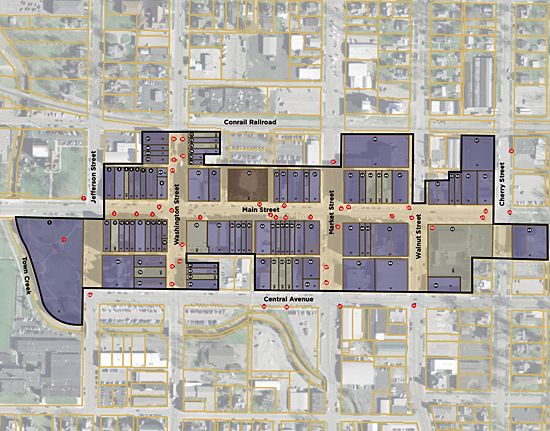DT on Nat’l Register of Historic Places
DAVE MOSIER/independent editor
Downtown development in Van Wert just got another tool with the notification that a large portion of the downtown is now on the U.S. National Register of Historic Places.

“It’s a tough process,” said Main Street Van Wert Executive Director Mitch Price of the process, adding that there aren’t a lot of Ohio downtowns on the National Register. “It kind of puts on the map a little more.”
In fact, it has taken the efforts of four MSVW directors — Seth Baker, Adam Ries, Dan Baisden, and now Price — over the past six years to get the paperwork intensive process finalized.
The current MSVW director said he learned of Van Wert’s approval on Friday morning via Zoom.
Price said a lot of effort went into getting the downtown on the National Register, noting for example that research was needed into the history of each building, the construction materials used in the buildings, and what type of façade is on each building, and praised his predecessors and the consultant who was first hired by Baisden for moving the process forward.
“Those guys did a great job,” he said.
The new historic district runs from Fountain Park on the west side to Harrison Street on the east, and from the railroad tracks on the north to Central Avenue on the south (see map at right), and is separated into contributing and non-contributing buildings.
Contributing buildings are those that meet the stringent requirements needed to be on the Historic Register, while non-contributing buildings are those that could meet requirements, but some changes, such as the addition of a sign or a metal façade that detract from a building’s historic significance, make them ineligible for inclusion as a historic building at this time.
The benefits of being a contributing building are substantial, Price said, with tax credits of up to 45 percent of the cost of renovating a building available in conjunction with Certified Local Government funding, for which the downtown is also eligible.
“That’s a huge benefit,” he noted.
Price said the development benefits will be especially helpful in leveraging investment dollars needed for the downtown renovation project being spearheaded by the Van Wert County Foundation, but added it should not hamper efforts to demolish the former Home Guard Temple building after a portion of that building collapsed into North Market Street earlier this month.
While it usually takes 60 days to get approval for demolition of a building on the National Register, with City Council’s letter declaring the building represents a threat to public health and safety, Price said the approval process for demolition is reduced to seven days, whenever funding is secured to tear the building down.
Meanwhile, the Foundation and its partners are working hard to ensure that other aging and neglected downtown buildings don’t go the way of the Home Guard building, although Baker has said that there are other buildings in the downtown area that are in bad shape, making it imperative that work begin soon on stabilizing those buildings in the worst condition.
POSTED: 09/22/20 at 6:57 am. FILED UNDER: News







